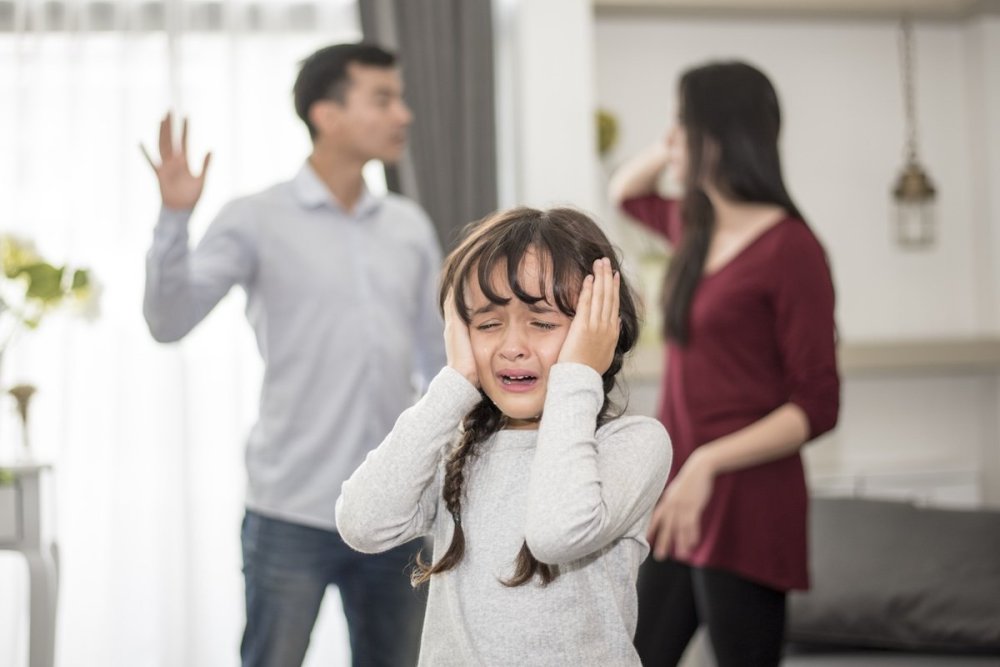Can our childhood experiences with caregivers shape the relationships we form as adults? Sonia Vadlamani explores what emotional abandonment looks like and how to recognize the signs of abandonment trauma.
Being left behind entails a distinct kind of pain – it’s unlike the expected heartache of loss or the closure at the end of a relationship. The trauma stemming from emotional abandonment isn’t always obvious. Its subtle presence influences every decision you make, relationships you build, and even your self-worth – yet you may not identify it as trauma at all.
What is Abandonment Trauma?
Abandonment trauma is a profound psychological wound that occurs when the consistent care necessary for a person’s emotional and physical well-being is withdrawn during their childhood or later in life. It can arise due to mental or physical abuse, neglect, rejection, loss of a caregiver or partner, or divorce.
People struggling with fear of abandonment may develop destructive behaviors, low esteem and chronic self-doubt. They may sabotage relationships by reacting with anxiety or mistrust, creating challenging patterns that are difficult to break without intentional effort and support.
Types of Abandonment Trauma
Abandonment trauma doesn’t manifest the same way for every individual. In 1969, British psychologist John Bowlby proposed the “attachment theory”, defining attachment as “the lasting psychological connection between two human beings.” He emphasized that the quality of our relationships with our caregivers significantly influences our cognitive and behavioral development, as well as our social connectedness in life.

Abandonment issues often stem from childhood neglect or abuse
Based on their experiences through childhood and growing years, individuals may develop secure or insecure attachment styles. Individuals with a secure attachment style tend to be responsive, warm, and capable of forming healthy, fulfilling relationships since they can trust others with greater ease.
Conversely, children and young adults who don’t receive conscious, consistent caregiving often develop insecure attachment styles – namely anxious, avoidant and disorganized:
- Anxious attachment style
This is often observed in individuals who are clingy, needy and co-dependent in relationships. According to a study published in The Journal of Personality and Social Psychology, almost 20 percent of adults form anxious attachment patterns in their relationships.
Adults with anxious attachment usually latch on closely in relationships – whether friendships or romantic partnerships – and can be emotionally reactive, fearing every conflict as a threat of being left behind. They may seek constant reassurance of love, be hypervigilant to behavioral changes or withdrawal, and ignore their own needs to make room for others, consequently struggle to live an authentic life.
- Avoidant attachment style
This pattern often develops when children or young adults are repeatedly dismissed, ignored or rejected emotionally by their caregivers. Individuals who learn that expressing their needs or feelings result in criticism or indifference often adapt by suppressing their needs altogether to avoid disappointment.
“Abandonment trauma is a profound psychological wound that occurs when the consistent care necessary for a person’s emotional and physical well-being is withdrawn during their childhood or later in life.”
These individuals may appear self-reliant and independent as adults, but often feel uncomfortable showing emotional intimacy, conflict or vulnerability, tending to withdraw when they get “too close” in relationships. Adults with avoidant attachment style due to abandonment may also emotionally stonewall their partners, even in committed relationships.
- Disorganized attachment style
This is considered the most complex and damaging attachment style, typically arising in adults who received fearsome or distressing experiences from their caregivers, often in the form of abuse or neglect. Adults with disorganized attachment tend to struggle with emotional regulation, chaotic relationship patterns, and contradictory behaviors such as simultaneously pursuing intimacy yet dreading closeness.
In fact, a study published in Archives of Psychiatry and Psychotherapy found a positive correlation between disorganized attachment style and mental health conditions such as Borderline Personality Disorder (BPD).
Signs of Abandonment Trauma
If you’ve ever wondered, “Do I have abandonment issues?”, you already may have noticed patterns and behaviors that don’t always make logical sense. Whether it’s the disproportionately intense reactions, the recurrent relationship cycles, or the hypersensitive feeling that you’re just one mistake away from being abandoned – over time, these reactions don’t sit quite right, prompting you to question these patterns.
A keen look at the signs of abandonment issues can help you recognize these unhealthy patterns – for after all, awareness is the first step toward healing.
1. Difficulty Regulating Emotions
A breakthrough study by Center on the Developing Child at Harvard revealed that the absence of “serve and return interaction” – or consistent care by a caregiver to a child – can disrupt their brain development, potentially leading to serious physiological problems with their learning, behavior and health.
MORE LIKE THIS:
- Inner Child Work and Therapy: How to Heal Past Wounds
- What is Quiet Borderline Personality Disorder
- Recognizing and Overcoming Emotional Dependency
As adults, those with insecure attachment styles may struggle with regulating their emotions in a healthy manner, swinging between intense expressions and emotional numbness. Consequently, emotional instability and insecurity are some of the most prominent traits in individuals with abandonment trauma, owing to neglect or inconsistent caregiving in their childhood.
2. Fear of Intimacy and Commitment
Building close, healthy, and intimate relationships is often a challenge for those with abandonment trauma. Indeed, research published in Journal of Personality and Social Psychology suggests that attachment style plays a key role in shaping romantic relationships.
For adults with avoidant dismissive attachment, the fear of being hurt or left again can cause them to avoid deep emotional connections altogether.

Abandonment trauma can lead to trust issues in relationships
3. Experiencing Trust Issues
“Children and adults may manifest similar emotions and concerns with regard to abandonment trauma, but because of different phases of development, they may contrast with behaviors. Common themes for both can include mistrust of others and feeling inadequate or ashamed within relationships,” explains Elizabeth Keohan, a licensed certified social worker.
“Even when their intellect recognizes someone as trustworthy, individuals with signs of abandonment issues often have difficulty quelling feelings of mistrust.”
A 2023 study published in Personality and Social Psychology revealed that individuals with insecure attachment styles show significantly lower ability to develop trust in relationships. Indeed, even when their intellect recognizes someone as trustworthy, individuals with signs of abandonment issues often have difficulty quelling feelings of mistrust.
4. Being Hypervigilant
Abundance trauma from childhood can trigger the brain to stay on a high alert to adapt to a potentially threatening environment, also known as hypervigilance. The constant lookout for perceived signs of rejection or loss makes such individuals hypersensitive to conflict or disagreement.
In fact, a study in Journal of Social Psychology found that individuals with rejection sensitivity exhibit heightened physiological stress responses such as an elevated heart rate, even toward mild criticism or constructive feedback.
5. Experiencing Chronic Loneliness
People with emotional abandonment issues – especially those with an anxious attachment style – tend to view loneliness as not just an uncomfortable condition, but a threatening one. A study by researcher Luke Norman and colleagues found increased amygdala activation in response to loneliness in adults with an insecure attachment style, compared to those with a secure attachments.

Chronic loneliness is a sign of abandonment issues
This fear of loneliness can result in forming unhealthy connections simply to avoid solitude, seeking constant company, and making major life decisions driven by the need to avoid loneliness, rather than by genuine will.
6. Being a People-Pleaser
Individuals with history of emotional abandonment often feel the compulsive need to please others, sometimes at the cost of their own values and boundaries. This trait is especially common among adults with anxious attachment styles, who go the extra mile to accommodate others while ignoring their own needs.
RELATED: 9 Signs Your Inner Child is Healing
The underlying belief here is often: If I’m accommodating and indispensable enough, I will not be left behind. Sadly, this tendency can result in taking responsibility for others’ feelings and emotions, losing touch with one’s own “sense of being” and authentic self over time.
7. Experiencing Physical Health Issues
Abandonment trauma doesn’t just affect our mind, but takes a toll on our bodies as well. Research from The Lancet Public Health showed increased risk of mental and physical health problems like cancer, heart disease, and respiratory disease for adults who experienced trauma in their childhood.
“Those with a history of emotional abandonment often feel the compulsive need to please others, sometimes at the cost of their own values and boundaries.”
Emotional abandonment can also manifest as higher dependance on alcohol, low physical activity, chronic pain, stress-induced digestive issues, and frequent panic attacks – all in response to unresolved emotional trauma.
8. Struggling to Find the Meaning of Life
Research suggests that adults with history of childhood trauma often struggle with spirituality or faith later in their lives, often experiencing detachment with their purpose in life. Abandonment issues can also emerge in the form of dissatisfaction and questioning what’s the point of life.
Treating Abandonment Issues
Healing from abandonment issues starts with self-awareness. Understanding what triggers you and consciously working through those feelings requires support and patience. Some effective approaches include:
-
Seeking therapy to explore your triggers and address your attachment patterns. Trauma-focused methods like somatic experiencing address and resolve your stored stress responses, while attachment-based therapy helps you understand and reshape your attachment patterns in relationships.
-
Breaking your insecure attachment patterns by accepting that it’s OK to be vulnerable and stay in discomfort rather than fleeing or clinging when conflicts happen. Asking for help, building boundaries instead of people-pleasing, and tolerating time alone instead of giving in to fear of abandonment are some ways to consciously move toward secure attachment styles.
-
Developing self-compassion by incorporating mindfulness practices, meditation, or breathwork exercises to stay grounded in the present moment and avoid reacting to triggers.
-
Improving your emotional regulation with clearer understanding of your triggers and patterns.
- Creating newer neural pathways with these practices, despite setbacks and challenges.
Remember, consistent effort in this direction can help you loosen the grip of your abandonment issues and reaffirm that you’re worthy of secure love.
Takeaway: Recognizing Abandonment Trauma
The trauma of emotional abandonment is often the most painful yet invisible wound we carry through life. It pervades through how we view ourselves and shapes our relationships – often without us even noticing its influence.
Indeed, while the signs of abandonment issues such as the fear of intimacy, heightened sensitivity to conflict or disagreement, or difficulty trusting others aren’t character flaws, they actively prevent us from building meaningful connections and leading a purpose-driven life.
Recognizing the signs of abandonment trauma from the lens of attachment patterns helps us understand our behaviors and make course-corrections – without self-blame and within a supportive environment. ●
Images: F01 Photo, Ministocker, Srdjan Randjelovic
happiness.com | The fine art of being: learn, practise, share
Are you a happiness.com member yet? Sign up for free and enjoy:
■ our happiness magazine with practical life tips
■ share and support in our happiness forum
Written by Sonia Vadlamani
 Fitness and healthy food blogger, food photographer and stylist, travel-addict and future-self journaler. Sonia loves to write and has resolved to dedicate her life to revealing how easy and important it is to be happier, stronger and fitter each day. Follow her daily pursuits at FitFoodieDiary or on Instagram.
Fitness and healthy food blogger, food photographer and stylist, travel-addict and future-self journaler. Sonia loves to write and has resolved to dedicate her life to revealing how easy and important it is to be happier, stronger and fitter each day. Follow her daily pursuits at FitFoodieDiary or on Instagram.
Join the conversation
You are posting as a guest. If you have an account, sign in now to post with your account.
There are no comments to display.